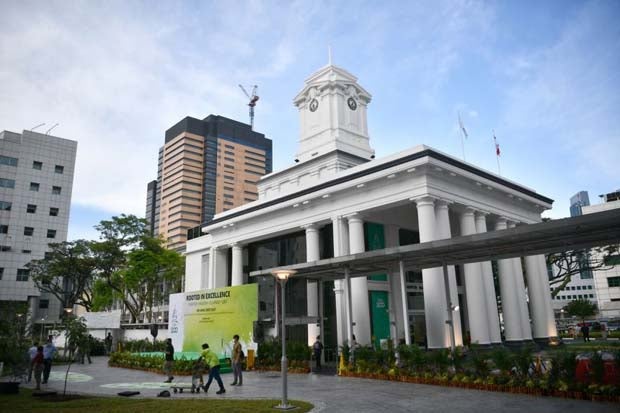
SGH, which was set up 200 years ago, currently ranks among the world's top 10 hospitals.
ST PHOTO: ARIFFIN JAMAR
SINGAPORE - Two centuries ago, a wooden shed was set up in Bras Basah to cater to injured European soldiers. Today, the Singapore General Hospital (SGH) boasts state-of-the-art facilities, and ranks among the world's top 10 hospitals. Here are some milestones from the hospital's history.
1821: SGH starts out as a wooden shed in the British military camp near Bras Basah and Stamford roads. It is staffed by military doctors, and nursing work is carried out by convicts in chains.
1845: A new hospital building - the fourth in just over 20 years - is constructed on Pearl's Hill and caters mainly to seamen. Previous iterations of the hospital had been badly built, with at least one collapsing "on account of the decay of the temporary materials with which it was originally constructed".
1860: SGH relocates again, this time to the Kandang Kerbau district, where it saw an average of 40 patients a day. Half of them were Europeans and - in a first - some were women.
1882: The hospital finally settles at the Sepoy Lines in Outram Road, where it remains to this day. Several years after its construction, nuns from a nearby French convent begin to care for the sick there. They were the very first nurses.
1926: After undergoing extensive renovation works, a newly-rebuilt SGH opens its doors. Three newly built blocks - later called the Bowyer, Stanley and Norris blocks - form the 800-bed hospital. The new hospital, which had previously taken in only seamen and policemen, now provides care for everyone. Today, only the Bowyer Block remains, and is home to the SGH Museum.
1942: During the last hours of the Battle of Singapore during World War II, wounded civilians and servicemen taken prisoner by the Japanese are taken to SGH by the hundreds. Those who die are buried on the hospital grounds, and remain there to this day. The Japanese take over the hospital, turning it into the main surgical hospital for their troops in South-east Asia.
1970: A government committee is appointed to look into the modernisation and development of SGH. Ten blocks were constructed over the years. Eleven years later, the new $180 million - and fully air-conditioned - hospital is opened by then Prime Minister Lee Kuan Yew.
2009: The iconic Bowyer Block is gazetted as a national monument.
2016: Prime Minister Lee Hsien Loong unveils the SGH Campus Masterplan to upgrade the hospital complex, making it more accessible and turning it into Singapore's largest medical campus.
2021: SGH celebrates its bicentennial year with the opening of a new garden. Deputy Prime Minister Heng Swee Keat plants a longan tree in the garden to mark the occasion, before getting a sneak peak of the revamped SGH museum, which is slated to open later this year.
Contributed by














 Get it on Google Play
Get it on Google Play